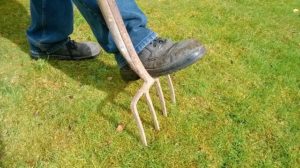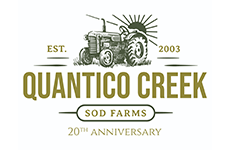
Making sure you have a beautiful lawn is harder than it sounds. Aerating your grass is an essential step in maintaining a healthy lawn.
Making sure you have a beautiful lawn is harder than it sounds. After all, grubs and other pests are going to do their best to make it difficult. One way to keep them away is to aerate your lawn and make sure thatch can’t take over. Your lawn and garden deserve the best!
An Introduction to Aeration
It’s always a good idea to brush up on your lawn and garden vocab. That way, you have a better idea of what it means to aerate your lawn. Plus, the chances are good that you’ll be more concerned about fueling up the lawnmower. With the cold season receding, be on guard against the growth of new weeds. Aeration is sometimes referred to as ‘coring and aerifying,’ and it is a common practice to defend against weed colonies. Coring moves around soil so that air, water, and nutrients have easier access to the roots hidden below the ground. Getting help from professionals is the easiest way to aerate your lawn and keep it healthy!
Water your lawn, but avoid oversaturation. Make sure you know where sprinkler heads and other utilities are to prevent any accidental damage. Use the aerator again and take a break to see what has changed. Once all of that is done, give your lawn another dose of water every three days or so. With any luck, you will only need to aerate once a year to prevent thatch buildup.
Time to Attack the Thatch
With all of that out of the way, let’s keep going. Small amounts of thatch will only help your lawn, believe it or not. It works like mulch, but only in small doses. Excessive thatch levels will ravage your garden and make it vulnerable to attack from diseases and insects. A heavily-thatched lawn allows pests and fungal infections to thrive and spread. You’ve got to dethatch before you can apply any fertilizer. While this sounds like an optional step, it is actually essential. Dethatching before you fertilize allows your fertilizer to work better. Although this part of the process is something you can do by yourself, it’s still a good idea to call the professionals – they know what to do to ensure more satisfactory results!
Have More Questions? Stay in Touch!
Order early, and order often to ensure the best service possible. Contact us through our online page. Find us at 27616 Little Lane, Salisbury, Maryland 21801. Our phone number is 410-726-6103, and our fax number is 410-742-6550. Speak to Jason Anderson for Turf Grass Sales. Reach him by email at jason@quanticocreeksod.com. Finally, follow us on social media on Facebook, LinkedIn, and our blog!
